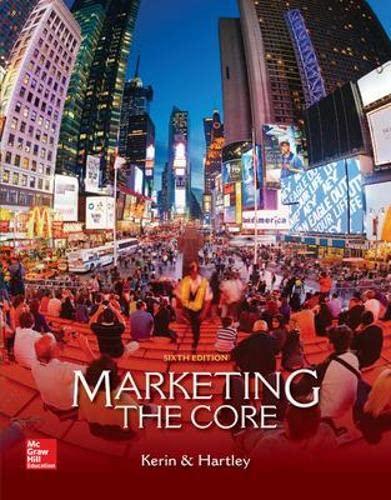If you build it, they will come not only worked in the movie Field of Dreams but
Question:
“If you build it, they will come” not only worked in the movie Field of Dreams but also applies—big time—to Mall of America®.
Located in a suburb of Minneapolis,
Mall of America (www.mall ofamerica.com) is the largest completely enclosed retail and family-entertainment complex in the United States.
“We’re more than a mall, we’re a destination,” explains Maureen Cahill, executive vice president at Mall of America.
More than 109,000 people each day—40 million visitors each year—visit the one-stop complex offering retail shopping, guest services, convenience, a huge variety of entertainment, and fun for all. “Guest services” include everything from a mobile concierge to a wedding chapel.
THE CONCEPT AND CHALLENGE The idea for Mall of America came from the West Edmonton Mall in Alberta, Canada. The Ghermezian Brothers,
who developed that mall, sought to create a unique mall that would attract not only local families but also tourists from the Upper Midwest, the nation, and even from abroad.
The two challenges for Mall of America: How can it
(1) attract and keep the large number of retail establishments needed to (2) continue to attract even more millions of visitors than today? A big part of the answer is in Mall of America’s positioning—“Always New!”
THE STAGGERING SIZE AND OFFERINGS Opened August 1992 amid tremendous worldwide publicity,
Mall of America faced skeptics who had their doubts because of its size, its unique retail-entertainment mix, and the nationwide recession. Despite these concerns, the mall opened with more than 80 percent of its space leased and attracted more than 1 million visitors its first week.
Mall of America is 4.2 million square feet, the equivalent of 88 football fields. This makes it three to four times the size of most other regional malls. It includes four anchor department stores: Nordstrom, Macy’s, Bloomingdale’s,
and Sears. It also includes more than 520 specialty stores, from Armani Exchange to DSW (Designer Shoe Warehouse). Approximately 36 percent of Mall of America’s space is devoted to anchors and 64 percent to specialty stores and attractions. This makes the space allocation the reverse of most regional malls.
Questions
1 Why has Mall of America been such a marketing success so far?
2 What (a) retail and (b) consumer trends have occurred since Mall of America was opened in 1992 that it should consider when making future plans?
3 What criteria should Mall of America use in adding new facilities to its complex? Evaluate (a) retail stores,
(b) entertainment offerings, and (c) hotels on these criteria.
4 What specific marketing actions would you propose that Mall of America managers take to ensure its continuing success in attracting visitors (a) from the local metropolitan
area and (b) from outside of it?
Step by Step Answer:






